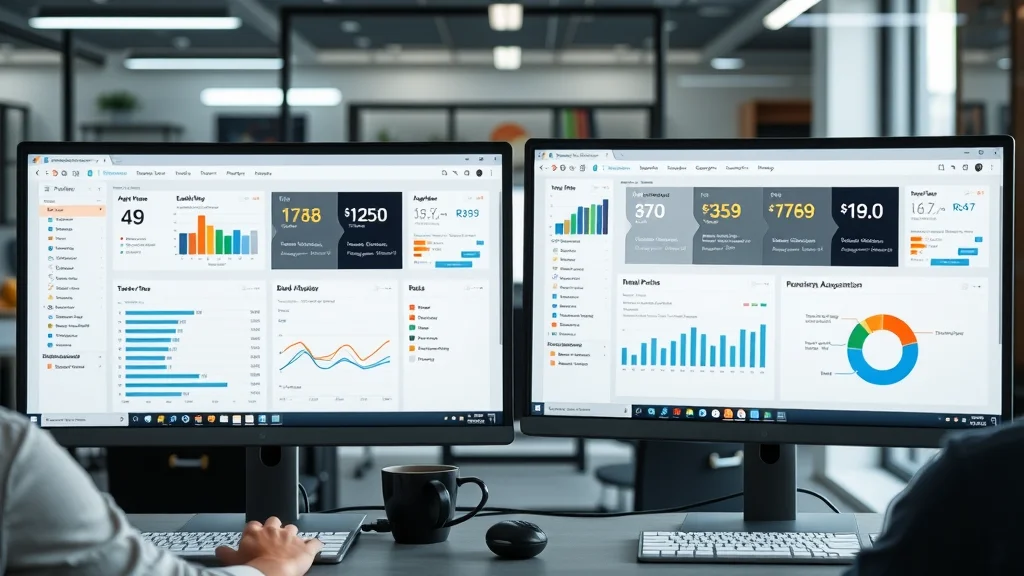Did you know companies with streamlined email workflow processes see up to 28% higher conversion rates within weeks? Yet, for most businesses, email campaigns feel overwhelming—cluttered inboxes, low open rates, and endless manual tasks. Imagine what you could accomplish if your email workflow headaches disappeared in just one day, boosting your email marketing, email automation, and automation workflow efficiency. This guide doesn’t just promise results—it delivers clear, actionable strategies to help you fix your email workflow fast, optimize your email campaigns, and improve open rate with real-life examples, expert tips, and success stories to spark change in your own process.
"Did you know companies with streamlined email workflow processes see up to 28% higher conversion rates within weeks?"
Key Takeaways: Unlocking the Potential of Email Workflow
Small workflow tweaks can yield significant gains in email marketing performance
Automation workflows reduce manual errors and save time
Personalized email campaigns enhance customer engagement
Tracking key metrics leads to continuous email workflow improvement

Email Workflow: Why Most Businesses Struggle (and How You Can Fix It Fast)
Far too many organizations rely on outdated email workflows or clunky email automation tools and marketing tools that never quite seem to work as promised. The truth? Email workflow issues—missed triggers, faulty segmentation, or stale email copy—chip away at your email marketing ROI every day they go unsolved. But what makes this urgent isn’t only stats; it’s the real opportunity you have to fix your email workflow in just 24 hours. With the right action plan, you’ll streamline your automated email campaigns, enhance your email automation workflow, save time, and significantly improve your open rate and email campaign click-through rates. Imagine spending less time troubleshooting and more time seeing results: higher conversions, stronger customer engagement, and less stress.
Whether you’re struggling with a messy automated email workflow or want to fine-tune your email automation, this guide walks you through practical steps to optimize your email campaigns, email automation workflow, and automation workflows for better results. From simple quick wins to advanced strategies, you’ll see how automation workflows can turn chaos into order—no matter the marketing tool or scale of your email list. Let’s peel back the curtain and discover how real businesses optimize their email marketing with smart, story-driven workflows.
A Startling Look at Email Workflow Failures
Picture this: A retail brand launches a holiday campaign, but due to messy automation workflows, half the recipients receive emails too late or not at all. What should have been a big sales win turns into a missed opportunity. These failures happen more often than you think. From missing triggers to sticking with tired subject lines, even small email workflow mistakes can tank your email campaigns. The fix? Identify blockages—like broken segments or outdated automated emails—before they spiral out of control.
One marketing team realized their email automation workflow was sending automated emails at midnight, missing peak engagement times and causing a drop in their open rate for their email campaigns. A hospital kept sending outdated post-visit surveys, damaging patient trust. Such pitfalls are common, but they don’t have to be permanent. Throughout this guide, you’ll find relatable examples illustrating exactly how to spot, solve, and prevent these workflow mishaps.
As you work to streamline your email automation, it's also worth considering how trust factors into your overall communication strategy. Building credibility and strong relationships through your messaging can have a profound impact on campaign results—explore more about why trust is a cornerstone of business success and how it can elevate your email marketing efforts.
What You'll Learn From This Guide
How to identify bottlenecks in your email workflow
Strategies for improving email automation workflow in 24 hours
Best practices for automated email campaigns
Real-world examples of effective automation workflow
Expert tips for optimizing open rates and click-throughs

Understanding the Email Workflow Process
What is the Email Workflow Process?
In simple terms, the email workflow process is a series of automated steps designed to send relevant emails at the right times. Whether it’s welcoming a new subscriber, reminding someone about their abandoned cart, or nurturing leads across months, an effective email workflow removes guesswork and saves you time.
Think of an email workflow as a relay race: each trigger passes the baton to the next action—segmentation, email copy creation, send email, and refining—to ensure smooth email automation workflow and effective email campaigns. A broken handoff means dropping the baton, losing customer interest, or annoying clients with poorly timed or irrelevant content. By mapping out each step, you make sure every message reaches the right person, with the right content, at the best moment in their customer journey.
The 5 Steps of an Effective Email Workflow
Trigger: The event that begins the workflow (like a purchase or website sign-up)
Segmentation: Categorizing recipients for personalized engagement
Email Copy Creation: Crafting compelling messages that match each group’s needs
Send Email: Delivering the right email at the right time
Measure & Refine: Tracking open rate, click-throughs, and adjusting for better results
Each of these steps is critical: miss one and your entire email automation workflow can crumble, negatively impacting your email campaigns and marketing tool effectiveness. Later, we’ll dive into how real businesses get these steps right—and the costly mistakes they avoid.
Diagnosing Common Email Workflow Issues
Why Automated Email Workflow Fails
Outdated automated emails
Poor audience segmentation
Ineffective email copy
Underutilized automation workflow tools
Even the best marketing tool can’t save you from errors like generic email copy, poor timing, or ineffective email campaigns. Outdated automated emails often land in spam folders, and sloppy audience segmentation causes the wrong emails to hit the wrong inboxes. Ineffective email copy means low open rates—even if you send emails at the perfect time. Sometimes, teams don’t use their automation platforms to the fullest, sticking with default templates rather than leveraging advanced features. Identifying and tackling these challenges as soon as possible is the secret recipe for successful email workflows.

Spotting Bottlenecks in Email Automation Workflow
How do you know where your email workflow is stalling? Start by examining open rates, click-through performance, and response times. If subscribers aren’t engaging—or worse, unsubscribing—it’s time to investigate. Common bottlenecks can be as simple as sending emails at off-peak hours or as complicated as an automation platform with missing integrations.
"We realized our email campaigns were firing at the wrong time—missing out on valuable customer attention." – Ecommerce Marketing Manager
Use analytics from your email marketing tool to spot trends and optimize your email campaigns, email automation workflow, and automation workflows for higher open rates and engagement. Are certain segments underperforming? Is your abandoned cart workflow sending too early or too often? These insights aren’t just numbers—they’re the clues that lead to faster, more effective fixes in your email automation workflow.
Accelerating Email Workflow Fixes: A 24-Hour Action Plan

Audit Your Current Email Workflow
Review automated email sequences
Analyze open rates, click rates, and delivery patterns
Spot manual send process inefficiencies
The first step is always awareness. Set aside an hour today to audit your automated email workflow. Print out or open the sequence of emails sent to each list segment. Where do you see gaps? Check delivery data—if open rates are low or click-throughs are dismal, dig into your email copy and timing. Pay close attention to any manual intervention still required; these are opportunities to automate further and start saving time.
Combine insights from your analytics dashboard with feedback from your team. The moment you find a drop-off point, mark it for immediate review. Real-world auditing stories—whether that’s a startup finding abandoned cart sequences firing to the wrong audience or a nonprofit realizing their welcome emails were missing attachments—show that even small discoveries can mean big results the very next day.
Prioritizing Quick Wins in Your Automation Workflows
Update outdated email copy and creatives
Test segmented lists for better engagement
Leverage new email automation tools
You don't have to overhaul your platform—tiny quick wins add up fast. Swap out old subject lines for something fresh, or split-test new messages for specific segments. Try sending emails at a time suggested by your tool’s analytics. Use features like dynamic content blocks to tailor messages based on customer data. One e-commerce brand, for example, replaced a generic subject line with a playful offer (“Forgot Something? Your Cart’s Almost Gone...”) and saw their open rate double overnight. Sometimes, you just need a new angle or a single workflow tweak.
Explore your automation platform’s latest features. Many offer AI-powered send time optimization or better visual campaign builders. By reworking just a couple of high-impact campaigns—like your abandoned cart workflow or welcome series—you can boost engagement and drive conversions in less than a day.
Optimizing for Results: Send Email at Peak Times

Timing is everything. Use your dataset to pinpoint exactly when your subscribers check email. Most modern automation workflow tools have suggestions based on historic engagement patterns. For example, a B2B company might see the best results by sending emails Tuesday mornings, while a consumer fashion brand might get higher open and click-through rates on weekends.
Test different send times as part of your audit—sometimes, shifting a newsletter by two hours unlocks a much higher response. Keep your experiments tightly tracked in a spreadsheet or CRM to spot patterns quickly. Remember, sending fewer but better-timed emails always beats bombarding inboxes without purpose.
For automated emails triggered by customer actions—like an abandoned cart workflow or follow-up after download—ensure automation is instant. Customers are more likely to act if the message appears while they’re still thinking about your brand or offer. This way, you’ll see your email workflow start to deliver results in just 24 hours or less.
Best Practices for Building Efficient Automated Email Workflows
Crafting High-Performance Automated Email Campaigns
Personalize content for subscriber segments
Automate responses based on user actions
Use dynamic triggers for real-time marketing
When building automated email campaigns, personalization is essential. Use your email list data—like purchase history or browsing behavior—to separate recipients and tailor email copy. That means a new customer gets a welcome email, while a repeat shopper might see loyalty offers. Automation workflow platforms allow you to set up dynamic triggers so that messages go out the instant someone interacts with your website.
The best email workflows respond in real-time and evolve based on engagement. For example, if a subscriber opens three newsletters but never clicks, automatically shift them to a different content track. These tweaks don’t just improve metrics—they make your brand feel more human to your customer.
Reducing Abandonment with an Abandoned Cart Workflow

Few workflows are more critical for e-commerce success than the abandoned cart workflow, a key part of effective email automation and automation workflows. When a shopper leaves without purchasing, a well-timed automated email can recover lost revenue. Start with a friendly reminder within an hour of abandonment, then follow up once or twice more—each time highlighting new benefits or urgency.
Real brands often see a lift in conversions by testing different angles in their abandoned cart emails, such as limited-time discounts or highlighting how few items remain in stock. Don’t forget: the subject line and copy both matter. If your segment is large, try tailoring the message based on cart value or product type. Success stories show that optimized workflows here can double recovery rates—in some cases overnight—all thanks to better automation and clear, actionable messaging.
Advanced Email Workflow Automation: Tools and Technologies
Choosing the Right Email Automation Workflow Platform
Comparing popular marketing tools for automation workflows
Considerations for scalability and integration
Choosing the right email automation workflow platform is like hiring a new star on your team, empowering your marketing toolset and marketing tool with advanced automation workflows. Tools like Mailchimp, Klaviyo, and ActiveCampaign each offer powerful features, from easy drag-and-drop editors to deep analytics integration. Consider your business scale: Will you need to send thousands of automated emails or just a few well-targeted sequences?
Look for platforms that offer seamless integration with your CRM, website, and analytics. Scalability matters—your automation workflows should grow with you, not slow you down. Story after story shows that the right marketing tool can elevate your campaigns, automate what used to take hours, and produce reliable, repeatable engagement across your entire email list.
Integrating Automated Emails with Customer Journeys
Lead nurturing through progressive sequence automation
Syncing email workflows with CRM and analytics
To truly maximize your marketing strategy, your automated email workflows must connect seamlessly with the broader customer journey. Imagine a lead entering your funnel from a Facebook ad, receiving a welcome sequence, moving through educational content, and finally getting a targeted offer—all tracked and adjusted automatically based on clicks and engagement.
The most advanced organizations link email workflows directly with CRM data, allowing for powerful lead nurturing. Trigger emails based on detailed customer data, from demographics to past purchases, making each message feel personal and timely. The result? Customers stay engaged and move naturally from prospect to loyal brand advocate.

Measuring and Iterating: Making Your Email Workflow Work Harder
Crucial Metrics for Email Workflow Success
Open rate
Click-through rate
List growth and segmentation effectiveness
You can’t improve what you don’t measure. Focus on core metrics: open rate, click-through rate, and list growth tied to detailed segmentation. Tracking these helps you spot where subscribers are most engaged—and where they’re dropping off. For example, a spike in open rates after testing new subject lines might reveal what truly captures your audience’s attention.
Don’t ignore smaller signals—like which emails are forwarded or which segments unsubscribe fastest. Each stat gives you a story about your audience’s behavior and the effectiveness of your current automation workflow. The strongest email marketing teams refine their process steadily, not just in big overhauls but with ongoing, data-driven tweaks.
A/B Testing and Continuous Email Workflow Improvement
"A single subject-line tweak can double your open rate overnight. Test relentlessly."

Never stop experimenting. Use simple A/B tests on subject lines, send times, and even email copy. When you try sending a newsletter at 8 a.m. versus noon, you may catch a whole new segment of your audience. Quick tests on abandoned cart workflow designs—like playful versus direct language—give instant real-world feedback.
Story-driven brands often share how one tweak, such as making the “buy now” button larger or changing the headline, led to huge open rates or conversions. Document these wins for your team and build an iterative process, so every future campaign gets better. The lesson? In email automation, there’s always another level to unlock.
Real-World Email Workflow Examples: From Automated Welcome Emails to Cart Recovery
Type of Workflow |
Trigger |
Tool Used |
Open Rate |
Key Tip |
|---|---|---|---|---|
Welcome Series |
New sign-up |
Mailchimp |
56% |
Personalize subject lines |
Abandoned Cart |
Cart abandonment |
Klaviyo |
32% |
Remind with urgency |
Post-Purchase Follow-Up |
Purchase event |
ActiveCampaign |
45% |
Request feedback |
Case Study: Transforming Email Campaign ROI in One Day

Consider a mid-sized online retailer that struggled for months with poor abandoned cart recovery. After a 24-hour deep-dive, they discovered their subject line was bland and emails went out late at night. By revamping email copy and shifting sends to 10 a.m., they doubled their open rate and boosted recovered sales by 40%—all in less than a day. This isn’t an isolated win; it’s proof that even small workflow overhauls can drive fast, dramatic results.
Their story inspires confidence: with the right focus, any brand can transform lackluster email campaigns. The key is to act quickly, measure impact, and share lessons learned across the team. Your next email workflow improvement might just be the most impactful marketing move you make this week.
Overcoming Advanced Email Workflow Challenges
Compliance and Data Privacy in Email Automation
GDPR and CAN-SPAM compliance
Handling unsubscribe requests in automated workflows
Legal compliance matters just as much as open rates. Every automated email workflow you build must comply with GDPR, CAN-SPAM, and local data privacy laws. Always include a clear unsubscribe link and honor removal requests instantly. Automation platforms can be set to automatically update your email list when a recipient opts out, minimizing risk and ensuring trust.
Going further, regularly audit how your customer data is stored and used. Set up triggers that handle “unsubscribe” or “data delete” requests automatically. Real businesses have avoided hefty fines and reputation troubles by treating privacy as a non-negotiable best practice, proving that sustainable automation is about more than just the numbers.
Scaling Email Workflows as Your Business Grows
Automation workflows for multi-channel campaigns
Coordinating email campaigns at scale
As your business expands, so must your email automation workflow. Move from basic email-only automation to automation workflows that span SMS, push notifications, and even social retargeting. Coordinate all channels from a central marketing automation platform. This ensures consistent messaging, timing, and personalization—no matter how big your team or audience grows.
Organizational success stories often center on scaling seamlessly—no bottlenecks, no broken integrations, just efficient, automated communication that adapts as new products launch or audiences shift. This is where planning today makes tomorrow’s wins inevitable.

People Also Ask: Key Questions About Email Workflow
What is the email workflow process?
The email workflow process is a structured series of steps that automatically sends targeted emails based on customer actions. It starts with a trigger, continues with segmentation and tailored email copy, and ends with analytics for continual improvement. Each workflow is designed to save you time and increase relevance for every recipient.
What is the 5 email rule?
The five email rule is a simple best practice: send five targeted emails as part of a campaign or nurturing sequence, such as a welcome series or follow-up campaign. These emails guide prospects through the customer journey, offering helpful content and calls-to-action at every stage, to optimize engagement and conversions.
What is an example of an email flow?
One example is an abandoned cart workflow: when a shopper leaves items in their cart, a trigger sends an initial reminder, followed by additional emails over a few days if needed. Each email can be personalized with product info and limited-time discounts to encourage a return and purchase.
What are the 5 steps of workflow?
The five steps are: 1. Trigger (event starts workflow), 2. Segmentation (sort recipients), 3. Email Copy Creation (write messages), 4. Send Email (deliver to inbox), and 5. Measure & Refine (analyze and improve results).
Frequently Asked Questions (FAQs) about Email Workflow
What tools help automate email workflows? Most businesses use marketing platforms like Mailchimp, Klaviyo, ActiveCampaign, or HubSpot, which offer robust automation workflow features for various types of email campaigns.
How often should automation workflows be reviewed? It’s best to review your email workflow quarterly to ensure messages, triggers, and segmentation stay relevant and effective.
What are best practices for improving open rates? Personalize subject lines, segment your lists, test send times, and use engaging copy based on customer data and behaviors.
How do I personalize my email campaigns at scale? Use dynamic content, detailed segmentation, and automated triggers based on user actions captured by your email automation platform to keep every message relevant and timely.
Next Steps: Transform Your Email Workflow Starting Today
Ready to leave broken workflows behind? Embrace the action steps above—audit, tweak, test, and automate relentlessly. Every improvement you make strengthens the heart of your email marketing strategy, putting your brand ahead, no matter your industry or list size.
If you’re eager to take your marketing strategy even further, consider how emerging trends like AI-driven search are reshaping the digital landscape. Understanding the future of search and how your business can adapt will give you a competitive edge—not just in email, but across all your digital channels. For a deeper dive into preparing your business for tomorrow’s marketing challenges, explore our guide on the future of search and AI’s impact on business growth. Staying ahead means not only fixing today’s workflows, but also anticipating the next wave of innovation.
I hope you enjoyed reading our blog. If you would like assistance with your marketing, give us a call at 207-710-1449 or visit our website at www.digitalmarketingall.org.
 Add Row
Add Row  Add
Add 






Write A Comment